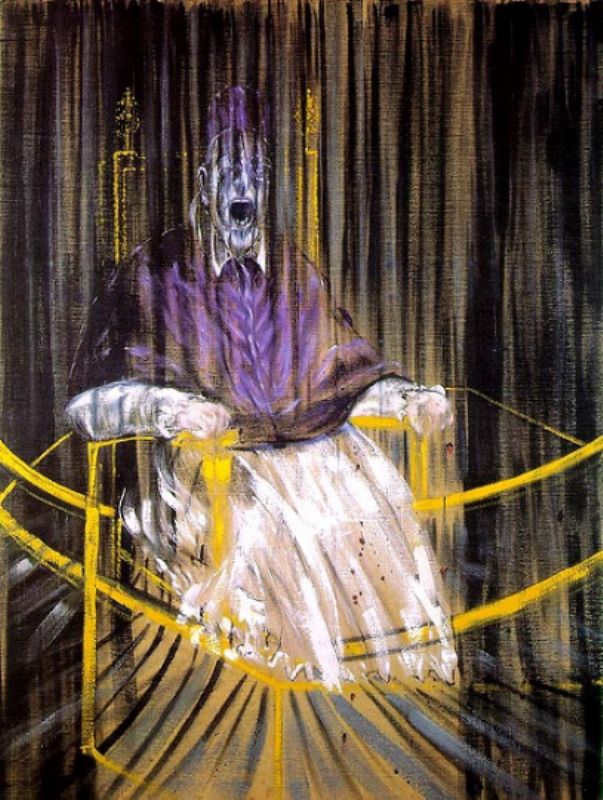 Campbell’s Soup I: Tomato, by Andy Warhol (1968)
Campbell’s Soup I: Tomato, by Andy Warhol (1968)
Elaine in high excitement because her verdict on Warhol’s Tomato soup image appears in today’s Times 2, page 5. “For me as an adolescent,” her entry admitted, “buying a can of this favourite soup was like buying the key to another glamorous world which I knew existed elsewhere and which I desperately wanted to be part of.” She concluded: “Warhol understood human nature and its pitfalls.”
confess I never very much liked tomato soup, Campbell’s or anyone else’s. They tasted clonal. But there was something about the very clonal quality of Warhol’s work that tickled my fancy, in the same way that the current clonal pink figures (mainly self portraits) painted by Yue Minjun do. But they both also speak to an underlying malaise, to a deep unease, to the diseases of consumerist cultures and, ultimately, to existential angst.
Oddly, I hadn’t realised until I Googled Yue Minjun that he had done at least one version of Francis Bacon’s papal imagery, which I have long seen as some of the most profound art of the last century. Yue Minjun riffs on Bacon, but – to me eye at least – doesn’t take things much further forward than a cartoonist might, let alone quantum jumping the deep meaning of the imagery as Bacon did when he riffed off Velazquez.
Last week, Elaine and I went to the Bacon exhibition at the Tate Britain. Three highlights, for me, were the painting of Pope Innocent X which the artist apparently disowned for many years (shown below), the small triptych of Bacon, head and shoulders, as you left the gallery, and the atelier area brimming over with his sources, sketches and refuse.
A lot of Bacon’s work has the rancid flavour of old bacon rind and once again had the same sort of effect on my aesthetic sensibilities as lemon juice does on live oysters. Still, underneath it all is something that I suspect will help Bacon’s work and reputation live for another 500 years. Velazquez, after all, painted his Innocent in 1650, some 400 years before Bacon followed not so gayly in his wake.
 Bacon study after Velazquez’s portrait of Pope Innocent X (1953)
Bacon study after Velazquez’s portrait of Pope Innocent X (1953)


Leave a Reply